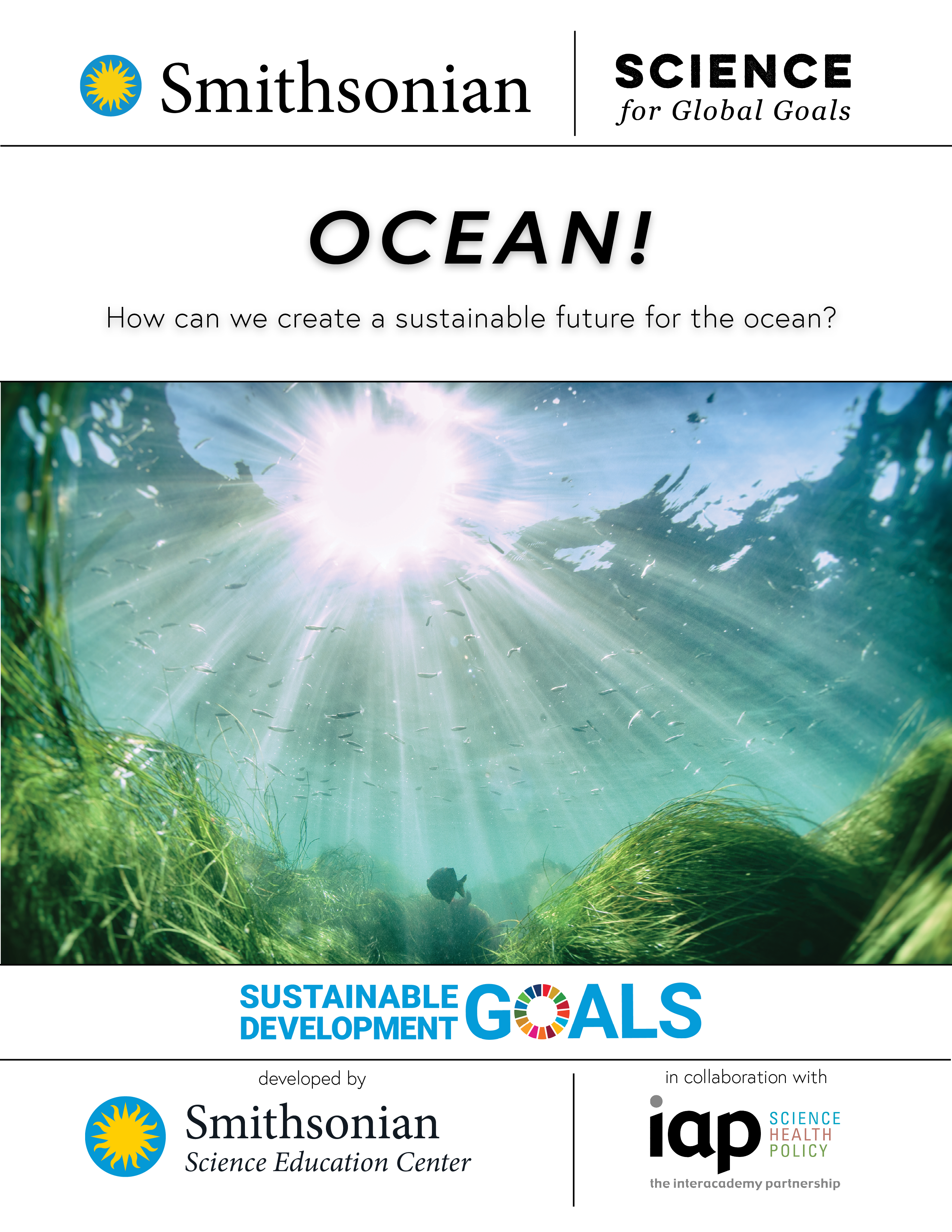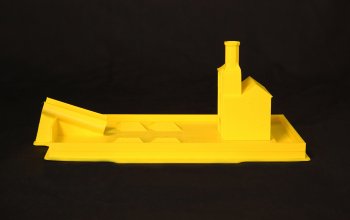Ocean! How can we create a sustainable future for the ocean?
Ocean! is a freely available community research guide developed by the Smithsonian Science Education Center (SSEC) in partnership with the InterAcademy Partnership as part of the Smithsonian Science for Global Goals project. Smithsonian Science for Global Goals community research guides use the United Nations Sustainable Development Goals (SDGs) as a framework to focus on sustainable actions that are defined and implemented by students.
Ocean! is the new community research guide from the Smithsonian Science for Global Goals project for students aged 11 to 18. In the guide, young people explore the question “How can we create a sustainable future for the ocean?” The guide contains twin themes that lead youth to discover their interconnectedness with the ocean and understand complex ocean systems. Together, these themes help prepare youth to take action towards a sustainable future for the ocean.
Visit the StoryMap for additional resources.
Help us measure impact! By providing us with this basic information, you are ensuring that we can document the reach of the Ocean module and helping the Smithsonian Science Education Center to understand how to best support educators and parents as they undertake this module with their learners.
Ocean! will be available in Spanish spring 2024!
Click below to download the PDF files for each part of the community research guide. Follow the instructions in the research guide for each task.

DOWNLOAD Ocean! GETTING STARTED


Task 1: What are our connections to the ocean? In this task young people discover their identities and the identity of the ocean, gather oral histories from community members about their relationships with the ocean, and design a museum exhibit to help others understand the ocean.
Task 2: What are ocean systems and why are they important? In this task young people learn how to diagram systems, investigate examples of different ocean system, and define their hopes and concerns for the ocean.

Task 1: Why is the way water moves around Earth important? In this task young people will map their watershed, model surface currents, and connect ideas about local and global water systems.
Task 2: How do circulating water pollutants affect our planet? In this task young people will model types of water pollution, investigate the impact of water pollution on ocean organisms and determine which pollution problem they would like to help solve.

Task 1: How do ocean systems help regulate Earth's air? In this task young people will explore the ocean’s role in ocean production, learn about the carbon cycle, investigate carbon sinks, and consider different perspectives on how to take action to reduce carbon dioxide in the air.
Task 2: How can we prevent ocean acidification? In this task young people will investigate how carbon dioxide in the air leads to ocean acidification, investigate the impact of an acidifying ocean on the shells of the ocean organisms.

Task 1: How do ocean systems help regulate Earth's temperature? In this task young people will explore how temperature affects them and their community, model how water acts as a heat sink for Earth and share the important role the ocean plays in keeping Earth habitable.
Task 2: How will a warming ocean affect people and the planet? In this task young people will use data to explore the changes caused by rising ocean heat and temperature, investigate feedback loops in systems, model a feedback loop related to ice and reflectivity, and create a way of expressing their priorities about changing ocean temperatures.

Task 1: How are the organisms of the ocean linked in a system? In this task young people will create ocean food web diagrams, play a game about trophic levels, and consider baseline shifts in ocean ecosystems.
Task 2: How can people be a sustainable part of ocean food webs? In this task young people will investigate how living things from the ocean are used in their community, play a game to better understand the problem of sustainable fisheries, and determine possible solutions.

Task 1: How do human and ocean systems compete for coastal spaces? In this task young people will find personal connections to coastal areas, investigate and analyze coastal conflicts, and reimagine the resolution of coastal conflicts to be fairer and more balanced.
Task 2: How can we protect coastal habitats to increase resilience? In this task young people will explore coastal ecosystem services, model how mangroves and coral reefs can help absorb energy, and explore different policy solutions to help resolve coastal conflict.

Task 1: How are different ocean systems interconnected? In this task young people will connect the systems diagrams created in Parts 2-6, analyze complex ocean systems, and come to consensus on the problem they collaboratively will work to help solve.
Task 2: How will we help create a sustainable ocean? In this task young people will generate different action possibilities and implement their action plan.




Kit Tips & Tricks